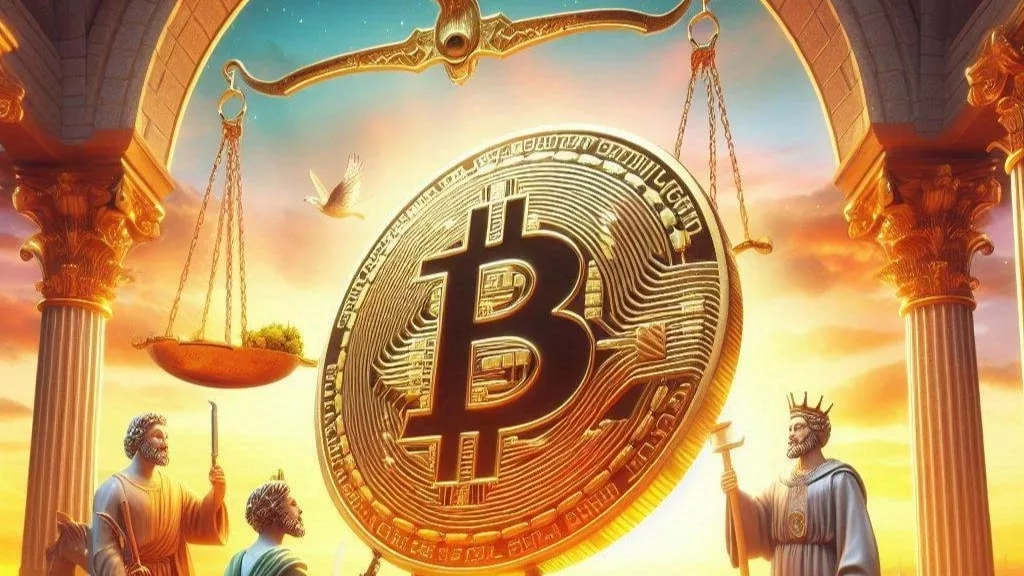Bitcoin traders have been through a rollercoaster ride lately. Just last weekend, the price of Bitcoin rallied to $65,000 after a long-awaited recovery. This surge gave hope to many traders, especially those who have been nervously watching the market ever since the crash earlier in August when Bitcoin dropped to $49,500. However, the rally didn’t last long, and as of now, Bitcoin’s price has dipped back to $60,980, leaving traders to wonder what’s next.
For many in the crypto space, the constant fluctuations feel like being stuck in a long, drawn-out battle. The crypto market has been in a “structurally ordered downtrend” for the past five months, meaning that even when Bitcoin prices bounce back, they’re still in a larger decline. This downtrend has weighed heavily on the minds of traders, especially those who had hoped the recent surge was the beginning of a more permanent recovery.
The close relationship between Bitcoin and the US Dollar Index (DXY) has been a focal point for many traders looking to forecast Bitcoin’s price movements. Traditionally, when the DXY weakens, Bitcoin tends to strengthen, and vice versa. Last week, the DXY hit its lowest point for the year, dipping below 101. This fueled Bitcoin’s rise to $65,000, as many saw this as a sign of a potential breakout from its downward trend.
Crypto analysts and market watchers, like Jamie Coutts from Real Vision, have even coined colorful terms for these market dynamics. According to Coutts, Bitcoin may be entering what some refer to as the “banana zone” or “batshit season,” a period where wild market behavior is expected. While these terms might sound amusing, they also hint at the unpredictable nature of Bitcoin markets that traders have come to both love and fear.
On top of the DXY’s fall, many traders had pinned their hopes on statements from the US Federal Reserve. On August 23, Federal Reserve Chair Jerome Powell hinted at the possibility of an interest rate cut in 2024, something the crypto community has been eagerly anticipating. The idea is that lower interest rates might lead to a return of quantitative easing policies, which could boost asset prices, including Bitcoin. Immediately after Powell’s speech, Bitcoin saw a brief 6% rise, reinforcing this belief among traders.
But despite these temporary gains, the data tells a more cautious story. According to metrics from Glassnode and CryptoQuant, Bitcoin demand remains lukewarm at best. In fact, Bitcoin’s demand has turned negative in recent weeks. Back in April, when Bitcoin was trading above $70,000, demand was strong, with a 30-day growth of 496,000 BTC. Now, that demand has dropped into negative territory, with a current decline of 36,000 BTC over the same period. As demand has dropped, so have prices, dragging Bitcoin down from its April highs.
Another important metric is the MVRV (Market Value to Realized Value) ratio, which tracks investor profitability. Right now, Bitcoin appears to be in a state of “equilibrium,” meaning that investor profits have reset, and the initial excitement after the ETF launch has completely cooled off. While Bitcoin is technically back in the comfort zone of $60,000 to $65,000, this doesn’t mean that traders are rushing back in with confidence.
Additionally, there’s been a noticeable decrease in Bitcoin liquidation volumes, another sign that traders are playing it safe. During Bitcoin’s all-time high in March, liquidation volumes were significantly higher as traders took on more risk and leverage. Now, with more caution in the market, liquidation volumes have decreased, signaling a much more muted risk appetite among traders.
The bottom line? The Bitcoin market may be stuck in a holding pattern. Despite brief rallies and external factors like the US Dollar and Federal Reserve decisions, demand for Bitcoin remains weak, and traders are cautious about jumping back into a volatile market. While the future might hold promise, especially with potential interest rate cuts on the horizon, for now, Bitcoin traders should brace themselves for more of the same: a market that seems content to fluctuate within a limited range.



